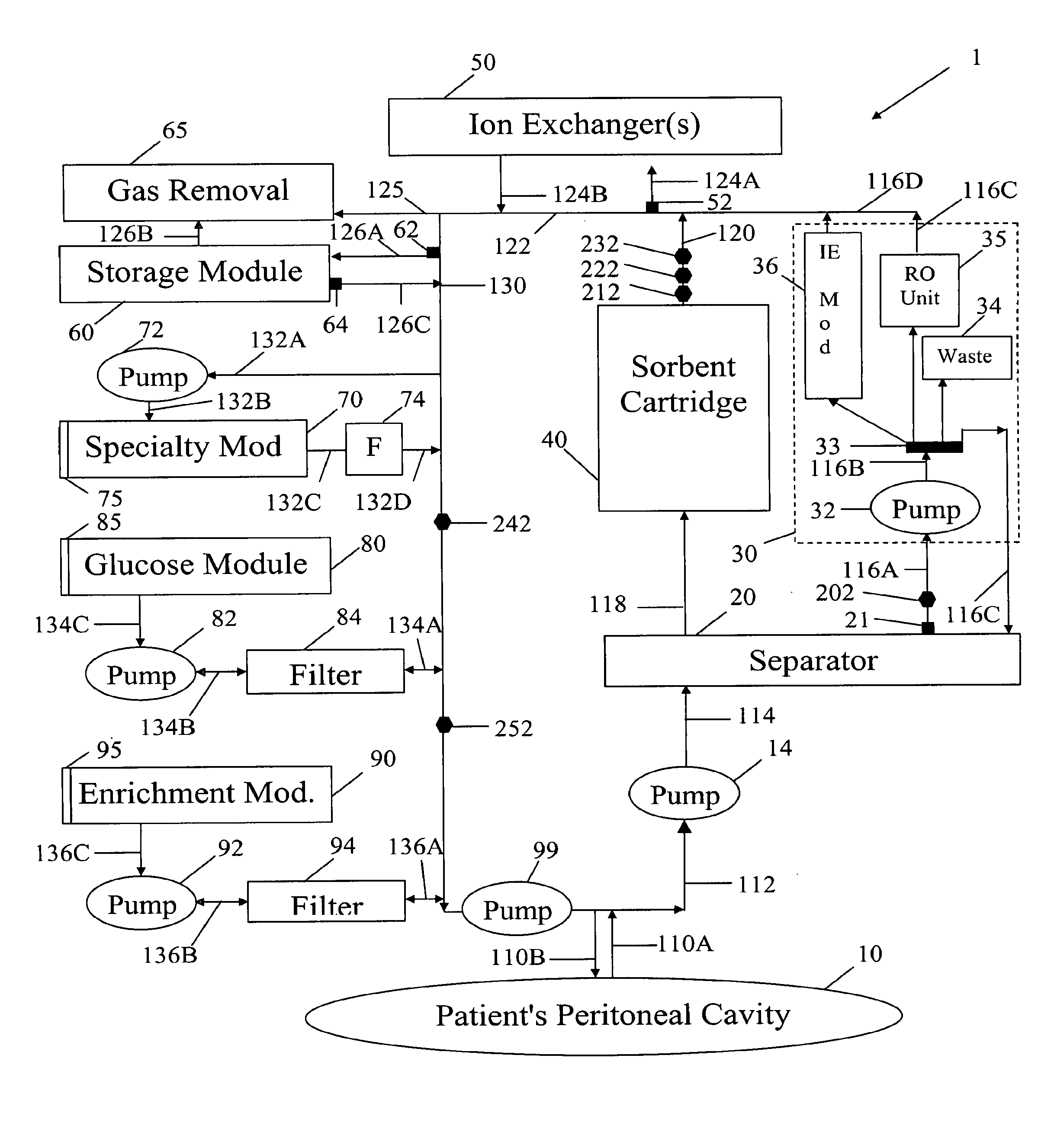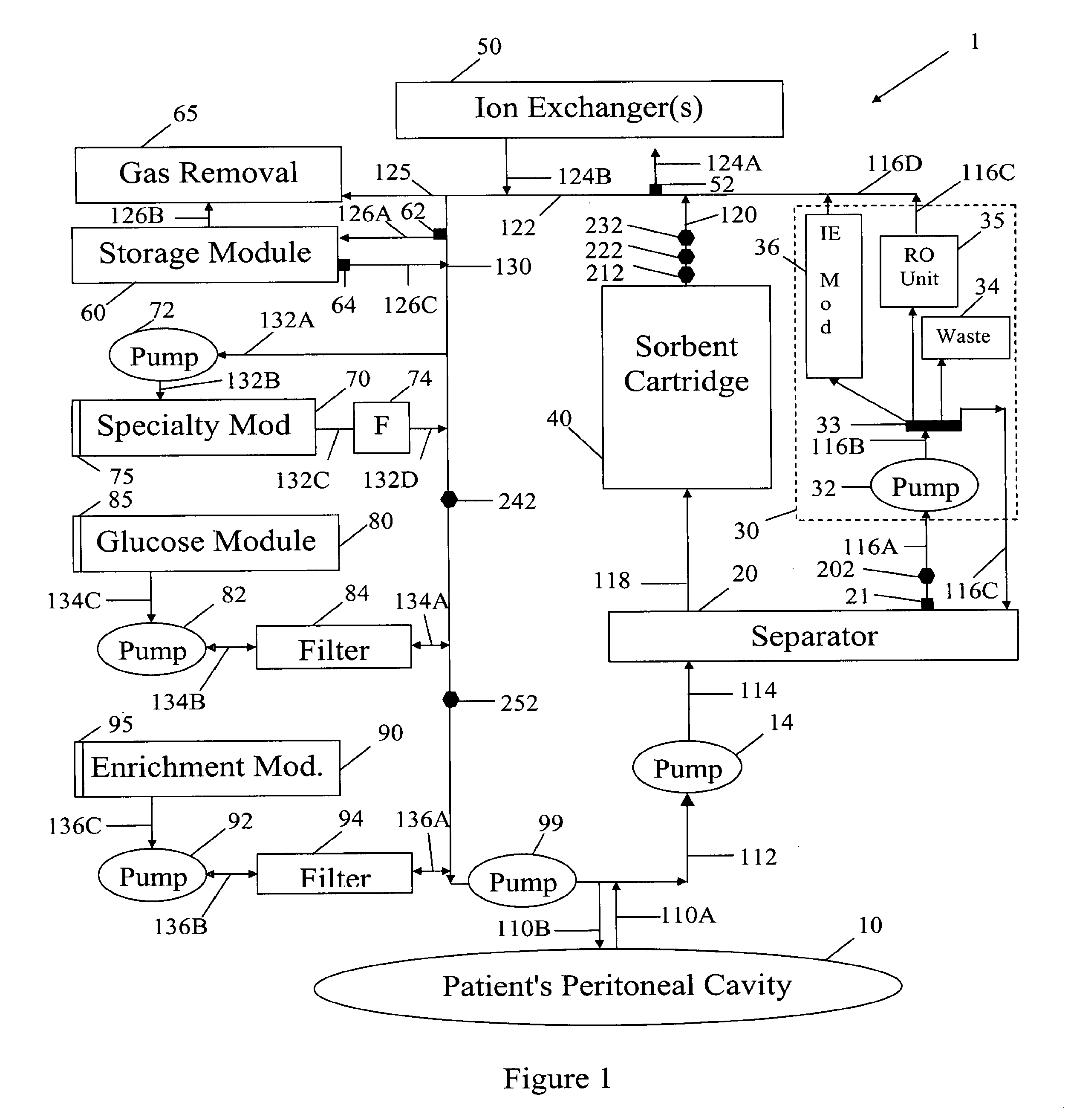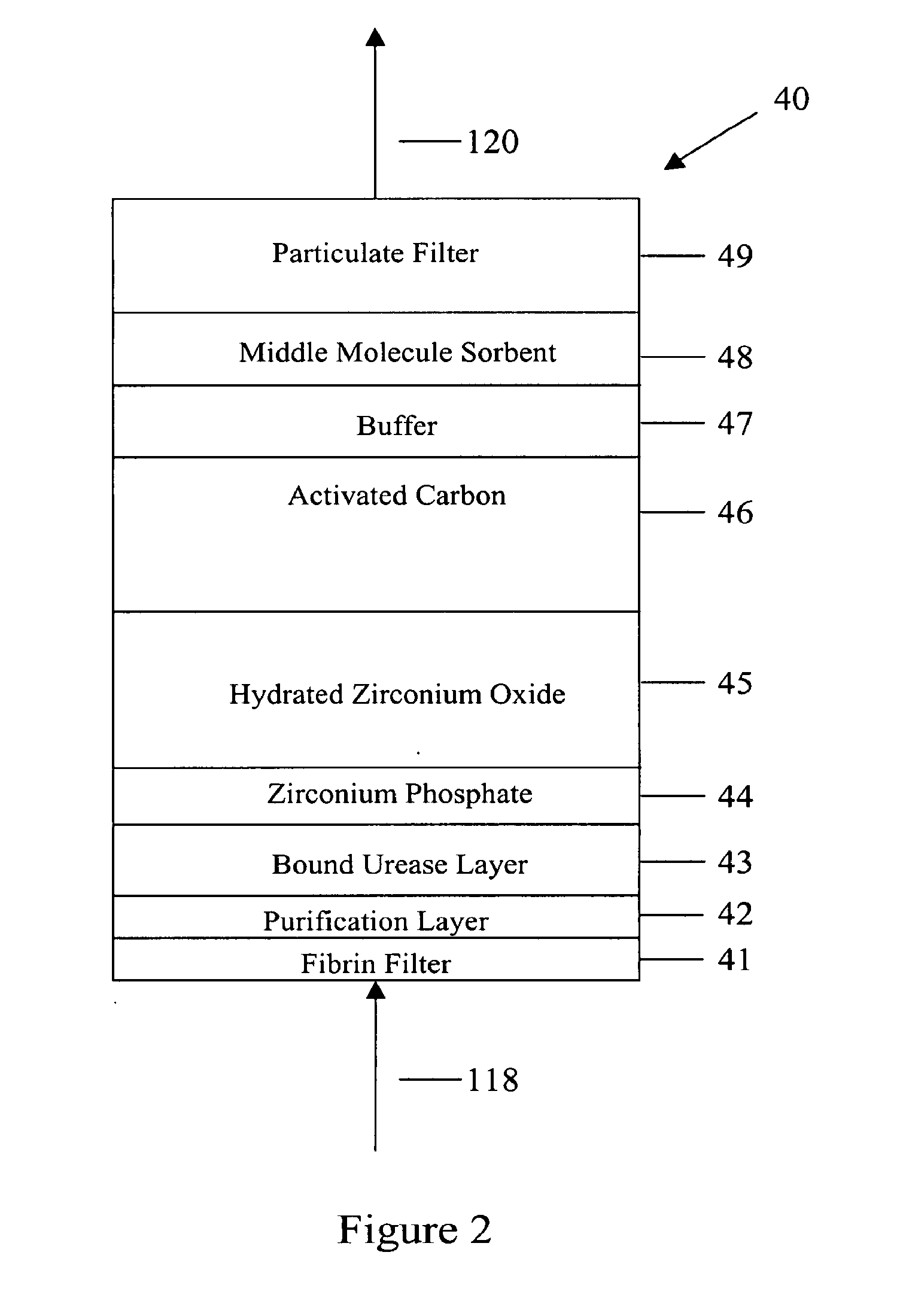Peritoneal Dialysis Methods and Apparatus
a technology of peritoneal dialysis and apparatus, applied in the field of peritoneal dialysis, can solve problems such as the possibility of processing fluids
- Summary
- Abstract
- Description
- Claims
- Application Information
AI Technical Summary
Benefits of technology
Problems solved by technology
Method used
Image
Examples
Embodiment Construction
[0049]In FIG. 1 spent peritoneal fluid is withdrawn from a user / patient's peritoneal cavity 10 through catheter 110A, and processed along a processing line that includes a separator 20, an ultrafiltrate handling assembly 30, a sorbent assembly 40, and one or more ion exchangers 50, optional storage module 60, a specialty module 70, a glucose module 80, and an enrichment module 90. The fluid is then pumped back into the peritoneal cavity through in-flowing catheter 110B by pump 99. All of the components of FIG. 1, minus the catheters 110A, 110B and the peritoneal cavity 10 are sometimes referred to herein as artificial kidney 1.
[0050]Catheters 110A, 110B should be interpreted interactively as either two physically separate catheters, or a single catheter with one or more lumens. All of the catheters, the various pumps 14, 32, 72, 82, 92 and 99, and the various fluid conduits 112, 114, 116A, 116B, 116C, 116D, 118, 120, 122, 124A, 124B, 126A, 126B, 126C, 130, 132A, 132B, 132C, 132D, 13...
PUM
 Login to View More
Login to View More Abstract
Description
Claims
Application Information
 Login to View More
Login to View More - R&D
- Intellectual Property
- Life Sciences
- Materials
- Tech Scout
- Unparalleled Data Quality
- Higher Quality Content
- 60% Fewer Hallucinations
Browse by: Latest US Patents, China's latest patents, Technical Efficacy Thesaurus, Application Domain, Technology Topic, Popular Technical Reports.
© 2025 PatSnap. All rights reserved.Legal|Privacy policy|Modern Slavery Act Transparency Statement|Sitemap|About US| Contact US: help@patsnap.com



